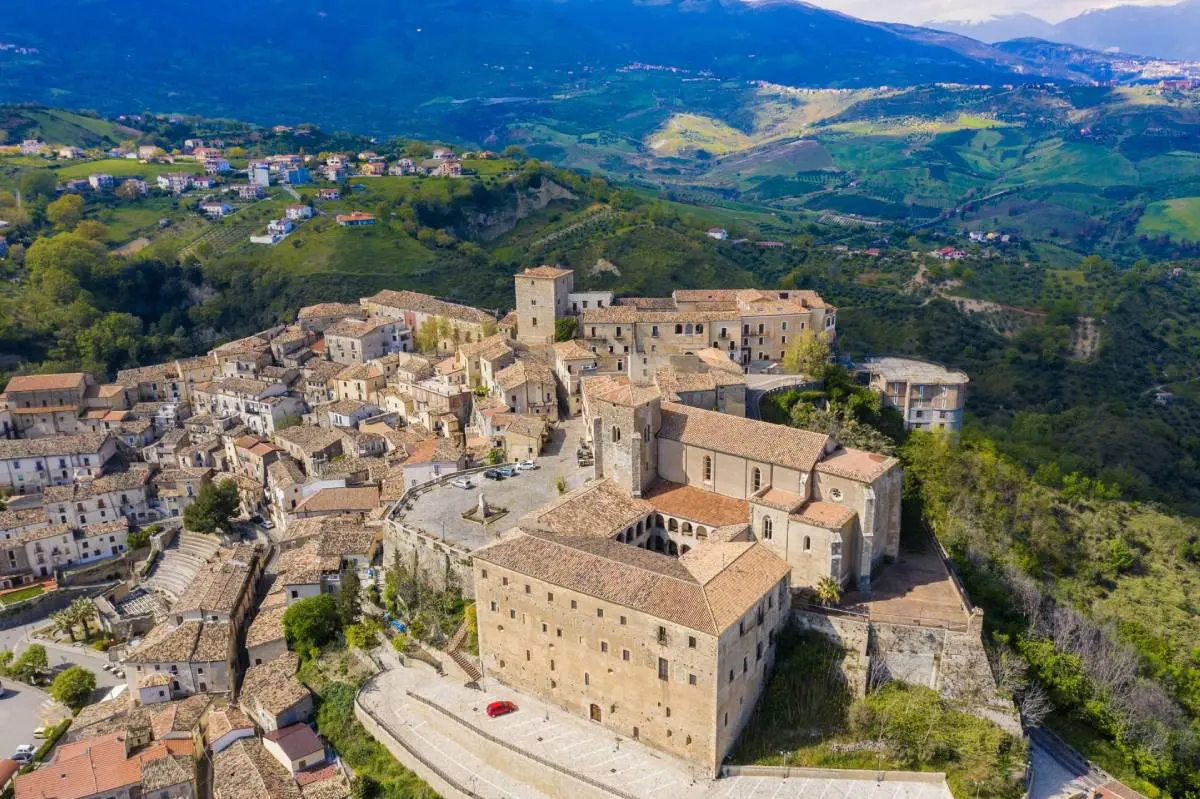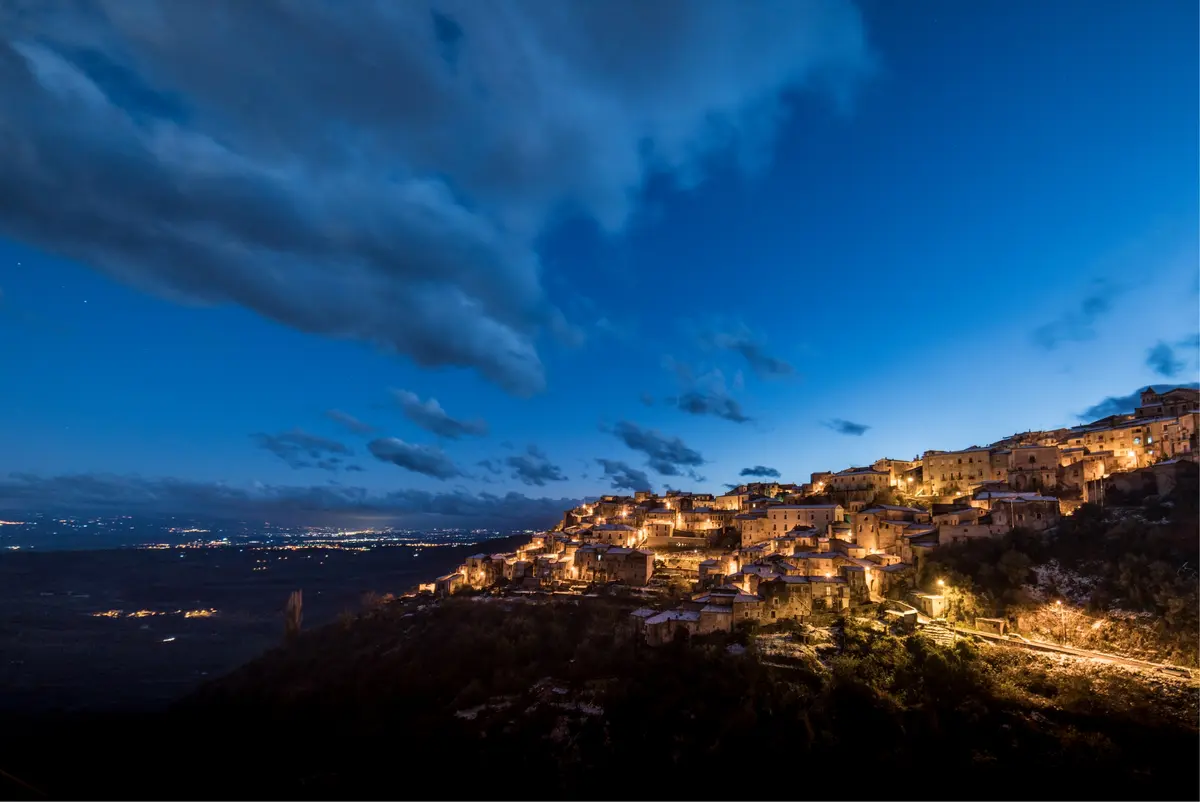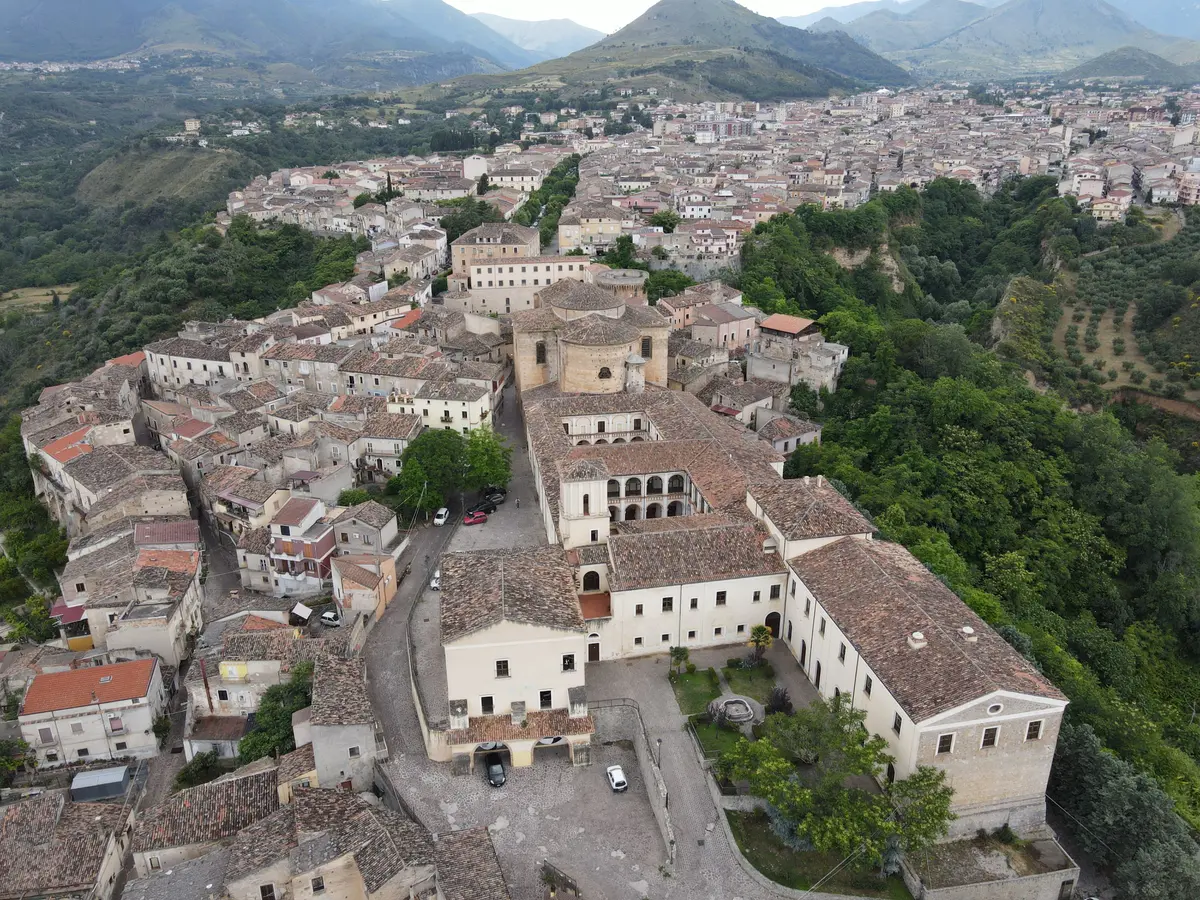Morano Calabro
Morano Calabro, the Pollino Crib

The orange flags
Morano Calabro - Regione Calabria
The village of Morano Calabro, in the centre of the Pollino National Park in the province of Cosenza, is one of Italy's Most Beautiful Villages.
Visit Morano Calabro and discover why it is called the ‘’Crib of the Pollino‘’ and why the hamlet of Campotenese is called the ‘’Provence of Calabria‘’.
Famous for the Morano Living Crib, the town itself is laid out like a real nativity scene, with the houses nestled up to the panoramic summit on which the village of Morano proper and the ruins of the castle stand. The Castle of Morano is of Norman origin, and from the top of its view it is clear why Morano is nicknamed the ‘’Crib of the Pollino‘’: its simple architecture, red roofs, alleyways, small squares and arches sloping down towards the San Nicola district are all evident. From up here we can also see the yellow-blue colours of the tiled dome and bell tower of the Collegiate Church of Santa Maria Maddalena. Inside, we admire a valuable Madonna of the Angels by Antonello Gagini (1505) and the Chapel of San Silvestro.
Not to be missed are the Museum of the History of Agriculture and Pastoralism and the Naturalistic Study Centre of the Pollino ‘’Il Nibbio‘’. What to do in Morano Calabro? Definitely taste the typical dishes of the village, such as stoccu e patèni, delicious stockfish with potatoes and dried peppers; then, take a hike along the paths of the Pollino National Park and, in spring, visit the enchanting Lavender Park of Campotenese, the ‘’Provence of Calabria‘’ tinged with purple.
No result








